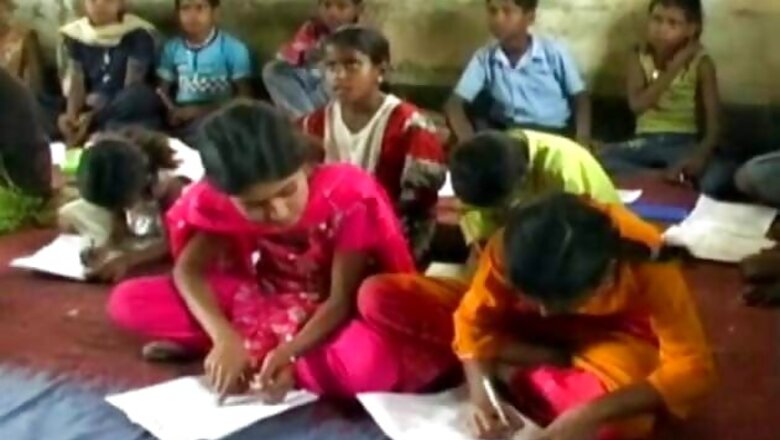
views
In 1883, Kadambini Ganguly and Chandramukhi Basu became the first female graduates of India. They excelled as a medicine expert and an educationist respectively; thereby demystifying the myth that women cannot venture out and contribute to the society like men.
Today, more than 61.1 million girls are enrolled at the primary level education. However, this is just a positive way of looking at a grim reality where girls in school still face social prejudices and apathy. The number of girl enrollment in schools sharply drops at the upper primary level, bringing the number down to 22.7 million.
The pressing problem for India now is the high rate of girl dropouts in schools, mainly from the primary to the upper primary level.
A report published by the National University of Educational Planning and Administration based on the data from 136 million schools across 35 states and UTs in Delhi shows that almost 30 per cent of girls drop out of school even before reaching standard six. The survey also reveals that the dropout rates reach its peak of almost 13 per cent in standard five when a girl is expected to hit puberty.
Recognizing the gravity of the situation, the Government of India launched the National Urban Sanitation Policy in 2008 with the objective of achieving 100 per cent sanitation coverage in urban areas. The policy made it necessary for schools to emphasize on personal hygiene, proper sanitation, clean toilet habits and most importantly separate toilets for girls and boys. However, reports show that 4 out of 10 schools across India still don't have functional toilets while more than 31 per cent of schools have no separate provision of toilets for girls.
One is hopeful though that the change at the helm of the country will undo this wrong. The ruling BJP party at the center has specifically mentioned that their top priorities are women, healthcare, school health and hygiene in its election manifesto. Women may account for only 11 per cent of all Lok Sabha MPs right now but they make 25 per cent of Narendra Modi's cabinet, including strong advocates of rights of women - Smriti Irani and Sushma Swaraj.
It is time to take up the issue of providing separate toilets for girls far more aggressively. Education plays a key role in this aspect; where educating teachers and parents is the first step towards Menstrual Hygiene Management. In fact much can be learnt from schemes like 'Kishori Shakti Yojna' which aims to improve the nutritional and health status of adolescent girls between the age group 11-18. They distribute free Sanitary Napkins to over 7.50 Lakh female students enrolled in the 729 government and government aided schools across Delhi. The School Health Scheme under the Chacha Nehru Sehat Yojna, New Delhi provides iron supplementation to all the students under the flagship Weekly Iron Folic and Acid Supplementation Program to help maintain their hemoglobin levels. At present, the program has reached out to over 3 lakh students in Central Delhi.
In addition, teachers and parent should be encouraged not to shy away from talking about menstruation cycle, and to make the girl proud of her body. The success of "no tobacco" and "no crackers" campaigns in schools gives us hope in this regard. Let us all pledge on this Menstrual Hygiene Day that we will empower our girl child by giving them a level playing ground with boys beginning from school.
Anjali Nayyar is a Public Health Policy Expert















Comments
0 comment